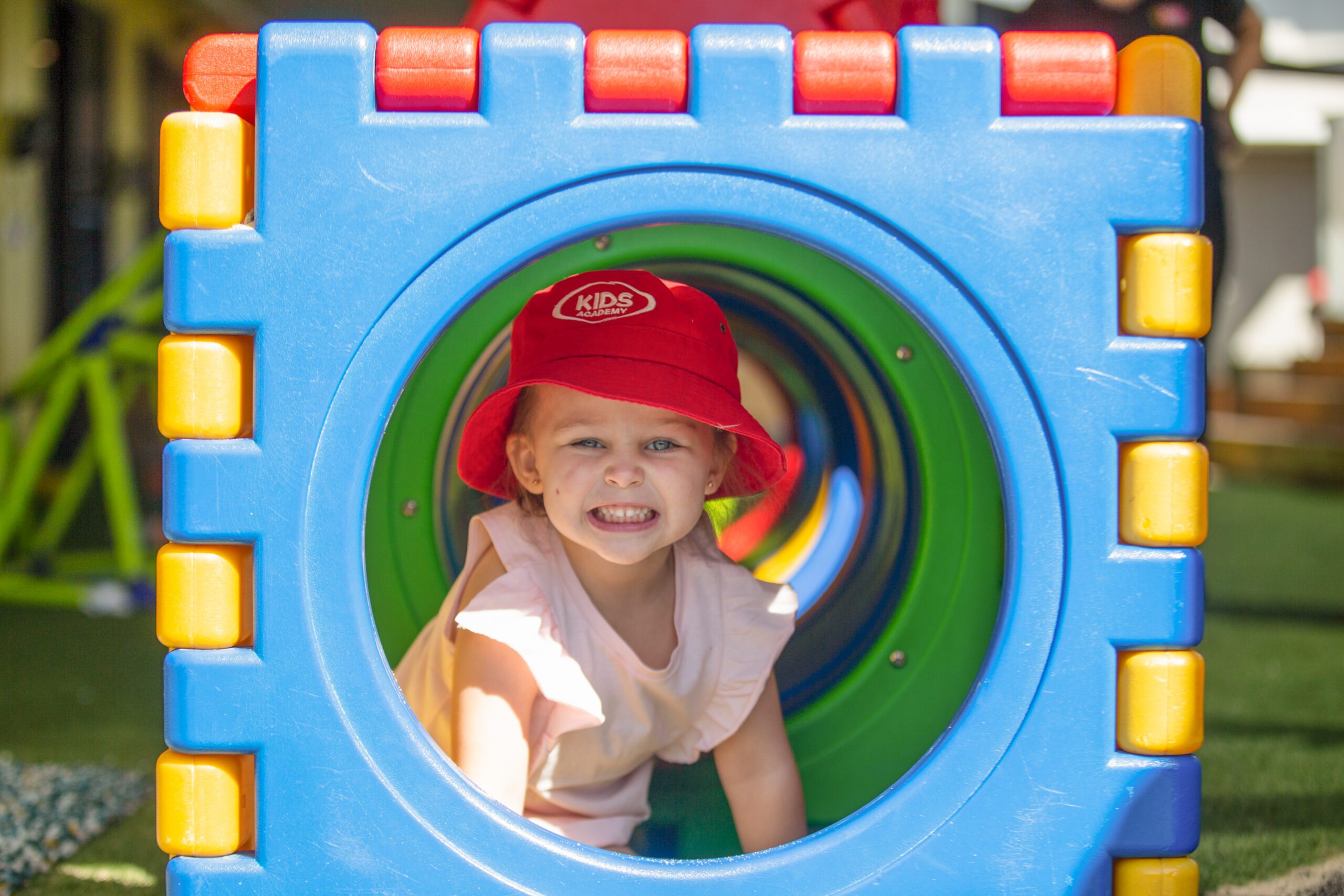
If your home feels like a round-the-clock sleep experiment - between 3am wakeups, nap refusals, and bedtime delays - you’re not alone. Sleep is one of the biggest challenges in the early years, and it looks different in every family.
At Kids Academy, we understand that sleep isn’t just about rest - it’s about feeling safe, supported, and emotionally secure. That’s why we partner with families to build consistent, nurturing sleep routines for children aged six weeks to five years, both at home and in our centres.
Whether you’re settling your baby into their cot for the first time or guiding your kindy kid through dropped naps, we’re here to help you navigate it all.
Setting Up a Safe and Supportive Sleep Space at Home
Sleep needs change dramatically between birth and age five, but safe, predictable environments remain essential at every stage.
For Babies (0–12 months):
- Back to sleep, every time. Always place your baby on their back in a cot or bassinet with a firm, flat mattress and fitted sheet.
- Keep it clear. Avoid pillows, soft toys, quilts, or bumpers - just your baby, their sleep bag, and a fitted sheet.
- Mind the temperature. 20–22°C is ideal. Dress your baby in light layers or a TOG-rated sleep bag appropriate for the season.
- Feet to foot. Placing your baby’s feet at the end of the cot helps prevent slipping under the covers.
For Toddlers (1–3 years):
-
Give them some control. Let your toddler choose their pyjamas or the bedtime story - it helps them feel involved.
-
Stick to routine. Predictable rhythms like “bath, book, bed” provide security and reduce bedtime resistance.
-
Use calming cues. A warm nightlight, gentle music, or a favourite comforter can ease the transition to sleep.
For Preschoolers (3–5 years):
-
Offer choices within structure. Let them decide which book or which stuffed toy, while keeping bedtime consistent.
-
Wind down early. Reduce stimulation before bed by turning off screens and switching to quiet play or storytime.
-
Stay consistent - even on weekends. This helps regulate their internal clock and promotes better daytime focus.
Managing multiple kids with different sleep needs? Try overlapping routines - like reading one story together or playing soft music - to help everyone wind down at the same time.
How Kids Academy Supports Safe Sleep in Our Centres
At Kids Academy, sleep is more than part of the daily schedule - it’s a time to restore, reset, and feel secure. That’s why we take a gentle, informed approach to safe sleep, tailored to each child’s developmental stage and family routine.
Here’s what that looks like:
- Educators are trained in safe sleep practices and follow national guidelines for babies, toddlers, and preschoolers.
- Babies rest in their own individual cot in calm nursery rooms, where we perform five-minute sleep checks and maintain visual supervision.
- Toddlers and preschoolers relax on low beds or sleep mats in softly lit rooms with calming music or white noise.
- We follow your child’s routine. You tell us what works at home - comforters, nap times, preferred sleep cues - and we continue those patterns here.
- Children who don’t sleep aren’t forced. Instead, we provide quiet choices like books, puzzles, or mindful drawing activities.
And when sleep doesn’t come easily - whether due to separation anxiety, developmental changes, or big emotions - our educators offer patient, compassionate support. We may gently pat, sit beside, or softly speak to children who need extra comfort. Our goal is to mirror the emotional security they feel at home, helping them rest without stress.
When Sleep Gets Disrupted (And How We Support the Transition)
Even the best sleepers go through ups and downs. Starting childcare, dropping a nap, teething, toilet learning, or welcoming a new sibling - all of these can impact your child’s sleep.
We understand that these transitions don’t stop at the centre door. That’s why our educators work closely with families to keep communication open and adjust rest routines as needed. If your baby is adjusting to cot sleep or your kindy kid is suddenly skipping naps, we’ll meet them with care, flexibility, and a deep understanding of what they need to feel calm and supported.
Real Questions from Families (and Our Honest Answers)
So common! At Kids Academy, we never force sleep. Children are encouraged to rest, but we provide quiet alternatives when they don’t fall asleep. At home, quiet time (even just lying down with a book) can still give their body a break.
Yes, with time and support. We help babies gradually adjust to cot sleep, always following your home routine and preferred approach to comfort.
Not at all. Many children drop their nap between ages 3 and 5. We offer rest time for everyone, but we understand some children may need it more than others.
You Don’t Have to Figure It All Out Alone
If you’re feeling overwhelmed by sleep (or lack of it), talk to us. Our educators are here to partner with you - whether it’s tweaking routines, helping your child settle during rest time, or simply listening when you’ve had a rough night.
You’re doing your best. We’re here to help.
Discover Kids Academy Near You
With centres in suburbs like Glenmore Park, Redbank Plains, Point Cook, Rosebery, and Craigieburn, Kids Academy offers a supportive, high-quality early education experience where safety, learning, and wellbeing go hand in hand - from playtime to nap time.
👉 Find your nearest Kids Academy centre and book a tour today.